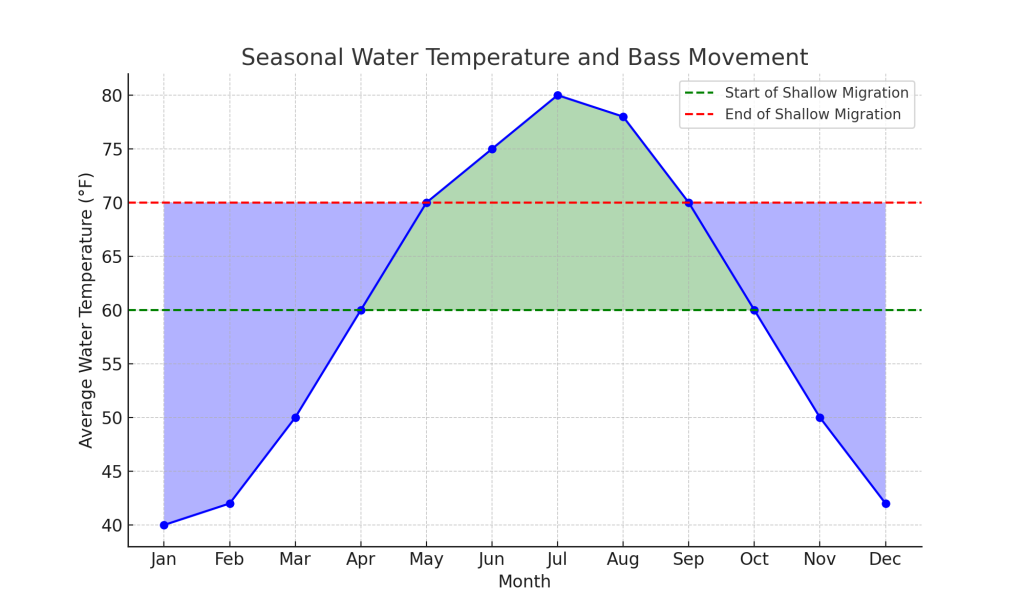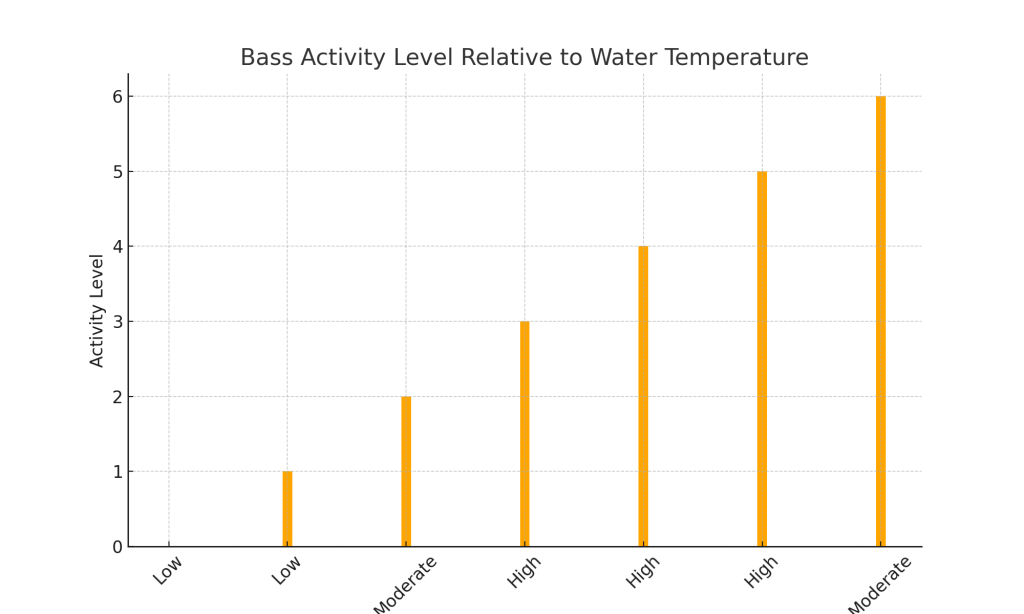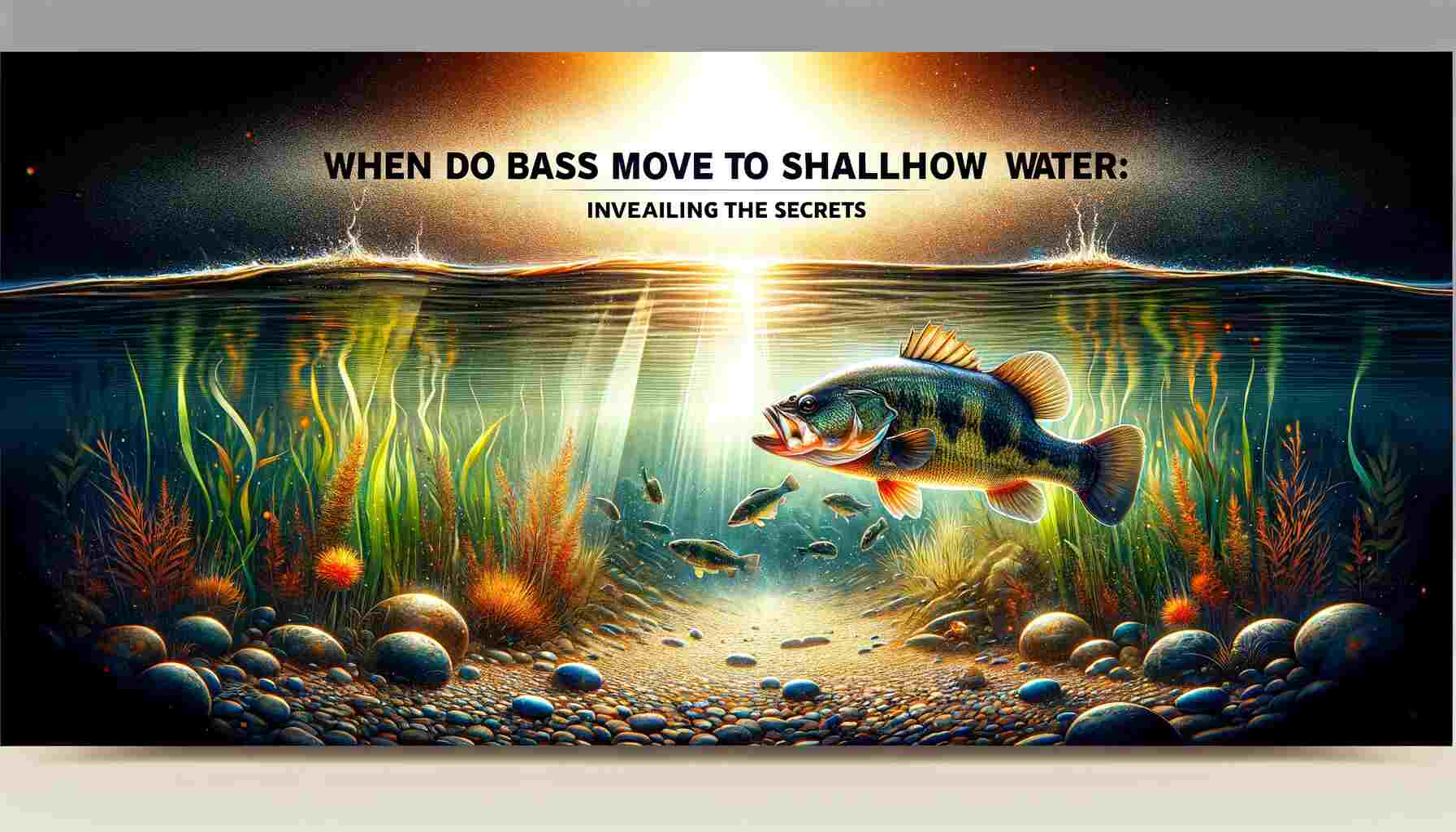One of the most intriguing aspects of bass behavior is their movement from deep to shallow water. Bass typically move to shallow water during specific periods of the year, largely influenced by seasonal changes, water temperature, and spawning habits. Understanding when and why bass make this transition can greatly improve your fishing success, which we will discuss in this article.
Seasonal Patterns of Bass Movement
Before we dive into the specifics of when bass move to shallow water, let’s first understand some basics about bass behavior. Bass, whether largemouth or smallmouth, are cold-blooded creatures, meaning their activity levels are heavily influenced by water temperature. Their movements are guided by a combination of environmental factors, instincts, and seasonal changes.

Spring: The Big Migration
Spring is arguably the most anticipated season for bass fishing enthusiasts. As water temperatures start to rise, typically reaching the mid-50s to mid-60s Fahrenheit (12-18 degrees Celsius), bass become more active and start their migration towards shallow water. There are several key factors that trigger this movement:
1. Spawning
One of the primary reasons bass move to shallow water in the spring is for spawning. Largemouth bass, in particular, seek out suitable nesting sites in water depths ranging from 1 to 4 feet (0.3 to 1.2 meters). Smallmouth bass tends to spawn in slightly deeper water, around 3 to 8 feet (0.9 to 2.4 meters). As water temperatures reach the ideal range of 60-70°F (15-21°C) for largemouth and 55-65°F (13-18°C) for smallmouth, these fish migrate to the shallows to reproduce.
2. Feeding Opportunities
Spring brings an abundance of prey to shallow water areas, such as baitfish and insects. As the water warms, bass takes advantage of this food source, making it an excellent time for anglers to target them.
3. Oxygen Levels
Warmer water holds less dissolved oxygen, and shallow water warms up more quickly. This is another reason bass move to shallower areas, as they can find better oxygen levels there in the spring.
4. Photoperiod
Daylight length plays a role in triggering bass movement as well. Longer days stimulate bass activity and make them more likely to migrate to shallow water.
Summer: Seasonal Variations
Summer can be a bit more challenging for anglers seeking bass in shallow water. As the season progresses, bass may move to deeper areas in search of cooler water and more stable conditions. However, there are still opportunities to catch bass in the shallows during the summer months:
1. Early Summer
In early summer, some bass may still be found in shallow water, especially during low-light periods like dawn and dusk. They may also seek refuge in shallow cover such as weeds, docks, and rocky structures to ambush prey.
2. Midsummer
As the water continues to warm, many bass will move to deeper water to find cooler temperatures. However, during hot summer days, they may venture into shallow water for brief feeding frenzies, especially in the early morning or late evening.
Fall: The Transition Period
Fall is a fascinating time for bass fishing, as it marks the transition from warm to cold water conditions. As the water temperature begins to drop, typically ranging from the mid-60s to low 70s°F (18-23°C) in early fall, bass become more active and move closer to the shallows. Key factors in fall bass behavior include:
1. Feeding Frenzies
Fall is when bass feed voraciously to store energy for the upcoming winter. They often follow schools of baitfish into shallow water, making it an excellent time for anglers to target them.
2. Temperature Sensitivity
Bass are extremely temperature-sensitive in the fall. When the water temperature starts to dip below their comfort zone, typically around 50-60°F (10-15°C), they migrate to shallower areas that remain warmer.
Winter: The Deep Retreat
Winter is the most challenging season for catching bass in shallow water. As water temperatures drop into the 40s°F (4-9°C) or even lower, bass retreat to deeper areas, where the water is more stable and the temperature remains relatively constant.
While it’s possible to catch bass in shallow water during winter, it requires specialized techniques and knowledge of their winter haunts, such as deep channels, rock piles, and other underwater structures that provide some relief from the cold.

Here is a great post We wrote to better understand the Seasons and get better fishing results.
Factors Influencing Bass Movement to Shallow Water
Understanding the factors that influence bass movement to shallow water is crucial for successful fishing. Here are some key considerations:
1. Water Temperature
Water temperature is the primary driver of bass behavior. Bass are ectothermic, which means their body temperature is regulated by the surrounding water. They become more active and move to shallower areas as the water warms up in the spring and fall. Conversely, they retreat to deeper water when temperatures become too extreme in the summer and winter.
2. Photoperiod
The length of daylight hours also plays a role in bass movement. Longer days in the spring and early summer stimulate increased activity and migration to shallow water for spawning and feeding. Conversely, shorter days in the fall signal the onset of colder weather, prompting bass to prepare for winter by feeding more aggressively.
C3 Food Availability
Bass are opportunistic feeders, and the availability of prey influences their movement. Shallow water areas often provide abundant forage, such as baitfish, crayfish, and insects, making them attractive to bass. Anglers should be aware of the types of prey present in the area they are fishing and adjust their bait and lures accordingly.
4. Oxygen Levels
Oxygen is essential for the survival of bass, and water with higher oxygen levels is more attractive to them. Shallow water areas tend to have better oxygenation, especially in the spring and fall. This is another reason why bass migrate to these areas during these seasons.
5. Water Clarity
Water clarity can also affect bass behavior. In clear water, bass tend to be more cautious and may seek cover in shallow structures or vegetation. In murky or stained water, they may venture into shallower areas more confidently in search of prey.
Tips for Bass Fishing in Shallow Water
Now that we’ve decoded the mystery of when bass moves to shallow water, let’s explore some valuable tips to help you become a more successful bass angler in these areas:
1. Choose the Right Tackle
Selecting the appropriate tackle is crucial when fishing in shallow water. Use lighter rods and lines to make accurate casts and prevent spooking fish. Opt for lures and baits that mimic the local forage and match the water conditions.
2. Understand the Structure
Learn to read the underwater structure of the area you’re fishing. Bass love cover, such as submerged vegetation, rocks, fallen trees, and docks. These structures provide ambush points and shelter for bass, so be sure to target them.
3. Pay Attention to Water Temperature
Monitor water temperatures regularly, especially during the transition periods of spring and fall. A good fish finder with a temperature sensor can be a valuable tool. Understanding the temperature preferences of bass will help you locate them more effectively.
4. Be Stealthy
Approach shallow water areas quietly and avoid making excessive noise or sudden movements. Bass can be skittish, and any disturbances may cause them to flee. Use a quiet trolling motor and be mindful of your shadow on the water.
5. Time Your Fishing
Bass are often more active during specific times of the day. Early morning and late evening are prime times for shallow-water bass fishing. During the summer, focus your efforts during low-light periods to increase your chances of success.
6. Experiment with Lure Presentation
Bass can be finicky when it comes to lure presentation. Experiment with different retrieval speeds, pauses, and movements to find what triggers their feeding response. Often, a subtle change in presentation can make all the difference.

Case Studies and Expert Insights
Bass fishing is a dynamic and nuanced sport, greatly influenced by the behavior of bass, which changes not only daily but also by the minute. Besides me other experienced anglers and biologists have shared valuable insights into bass behavior, emphasizing the importance of understanding their changing habits across different seasons and conditions.
Dr. Dave Ross, a renowned oceanographer, highlights the complexity of fish behavior, noting that their sensory mechanisms are evolved to detect motion, noise, color, and scent. He advises anglers to consider these aspects when choosing lures and baits, emphasizing that understanding the physiology and behaviors of both the gamefish and their prey is crucial.
Greg Myerson, a record-holding striped bass angler, adds that large bass are harder to fool and require natural presentations, with sound being a primary factor they respond to. He suggests that lures should imitate the sounds made by prey that the bass feed on.
The University of Illinois research team, including Steven Cooke and others, noted the heritable trait of largemouth bass vulnerability to being caught by anglers, indicating the need for sustainable fishing practices and adaptive management strategies to preserve bass populations over the long term.
Further insights from anglers.com elaborate on how bass behavior is influenced by weather conditions. In warmer conditions, bass actively seek warmer water, while in the summer, they look for cooler waters due to oxygen level concerns. Fishermen often find spring and fall to be the most favorable seasons as bass tend to feed in shallower waters, making them easier to catch. The site also discusses how bass are opportunistic, predatory feeders, known to consume a wide range of prey from crayfish to small mammals.
Understanding these behaviors and preferences can significantly enhance an angler’s ability to adapt their techniques and increase their success rate in different fishing scenarios.
Conclusion
In conclusion, the migration of bass to shallow waters is a dynamic process deeply influenced by seasonal variations, water temperatures, and reproductive behaviors. During spring, particularly in the pre-spawn and spawn phases, bass reliably moves into shallower areas as temperatures rise, making this period ideal for shallow-water fishing.
Post-spawn, in the summer months, bass may retreat to deeper waters but continue to forage in the shallows, especially during cooler times of the day. Fall brings another significant shallow water movement as bass actively feeds in preparation for winter. In winter, while bass predominantly occupy deeper, warmer waters, they can occasionally be found in shallows, particularly during warmer spells or in milder climates.
These patterns, however, are subject to variations depending on local environmental factors and the specific species of bass, emphasizing the importance for anglers to adapt and observe local conditions for successful fishing experiences.










